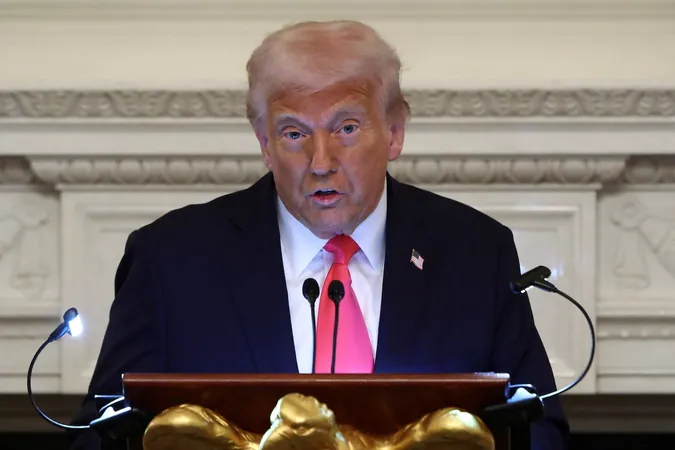
The Unfolding Saga of Trade Wars: A Look Back at the U.S.-Canada Tariff Battles of 1890
2025-03-28
Author: Liam
In an evocative moment from early autumn in 1890, Sir John A. Macdonald, the then-Prime Minister of Canada, captivated a large audience in Halifax with a passionate oration on the perils of tariffs—a speech that increasingly resonates in today’s geopolitical climate.
His remarks were sparked by the introduction of the McKinley Tariff Act in the United States, which imposed staggering tariffs of up to 50% on Canadian exports destined for American markets. Spearheaded by Ohio Congressman William McKinley, the act aimed to protect U.S. manufacturers but was seen by Macdonald as a brazen attempt to annex Canada. “The fact is that the United States covet Canada," he boldly proclaimed, warning that these tariffs were not just about trade but a veiled move towards political domination.
Fast forward to 2025, and the echoes of Macdonald’s concerns about economic predicaments and political insecurities linger. Just as he faced an emboldened neighbor eyeing Canada’s resources, current Canadian leaders are navigating a complex landscape with the U.S., balancing trade interests and national sovereignty.
At 75 years old, and at the twilight of his long tenure, Macdonald was acutely aware of his government's waning political vitality. The Conservative Party, like today’s federal Liberals, was grappling with the stability of its leadership amidst a rising tide of tariff disputes. Despite his concerns about his political legacy, the tariff conflict reinvigorated Macdonald’s administration. The Conservatives famously campaigned in the 1891 elections on a platform of protecting Canada from U.S. expansionism, which ultimately led to their re-election.
Ontario and Quebec, where much of the manufacturing industry was concentrated, were particularly affected by the McKinley Tariff, as the United States was then a crucial trading partner. However, history tells us that despite the initial repercussions—imports and exports dwindling—the Canadian economy exhibited remarkable resilience. Surprisingly, between 1890 and 1895, even as exports to the U.S. dipped by nearly half, Canadian exports to Britain surged, doubling during the same period, and trade with other regions like the Caribbean also saw impressive growth.
Furthermore, the political fallout for President Benjamin Harrison and his Republican Party in light of these tariffs was stark. They suffered a monumental defeat in the 1890 midterm elections, showcasing the dissatisfaction of the American electorate, which culminated in Grover Cleveland’s overwhelming victory in 1892—a testament to the political backlash against protectionist policies.
In the latter part of the 1890s, as economic realities shifted, the Republican Party, initially staunch advocates of tariffs, gradually transitioned towards a call for “reciprocity” or free trade. By 1901, McKinley himself recognized the necessity of participating in global trade dynamics, articulating that the U.S. could not isolate itself if it aimed to expand its market reach.
Tragically, at a time of evolution in trade philosophy, McKinley’s presidency was cut short when he succumbed to an assassination attempt. Eight days post the incident, the nation mourned the loss of a leader who was coming into the light of a new economic understanding.
Today, as the world watches unfolding trade wars and diplomatic dialogues, the lessons from the tumultuous relations between Canada and the United States in the late 19th century remain remarkably relevant. Will history repeat itself? Stay tuned—a new chapter is always on the horizon!









 Brasil (PT)
Brasil (PT)
 Canada (EN)
Canada (EN)
 Chile (ES)
Chile (ES)
 Česko (CS)
Česko (CS)
 대한민국 (KO)
대한민국 (KO)
 España (ES)
España (ES)
 France (FR)
France (FR)
 Hong Kong (EN)
Hong Kong (EN)
 Italia (IT)
Italia (IT)
 日本 (JA)
日本 (JA)
 Magyarország (HU)
Magyarország (HU)
 Norge (NO)
Norge (NO)
 Polska (PL)
Polska (PL)
 Schweiz (DE)
Schweiz (DE)
 Singapore (EN)
Singapore (EN)
 Sverige (SV)
Sverige (SV)
 Suomi (FI)
Suomi (FI)
 Türkiye (TR)
Türkiye (TR)
 الإمارات العربية المتحدة (AR)
الإمارات العربية المتحدة (AR)